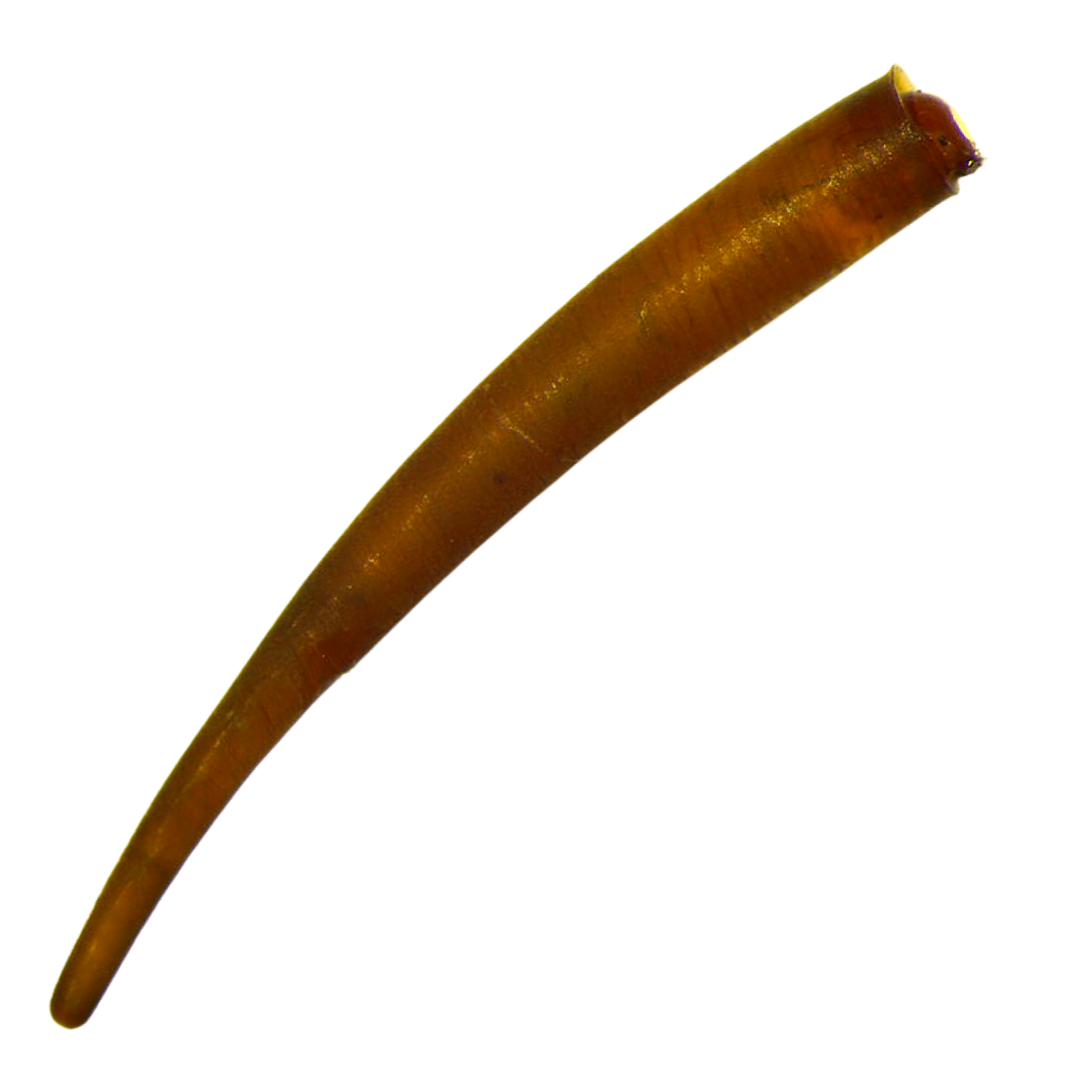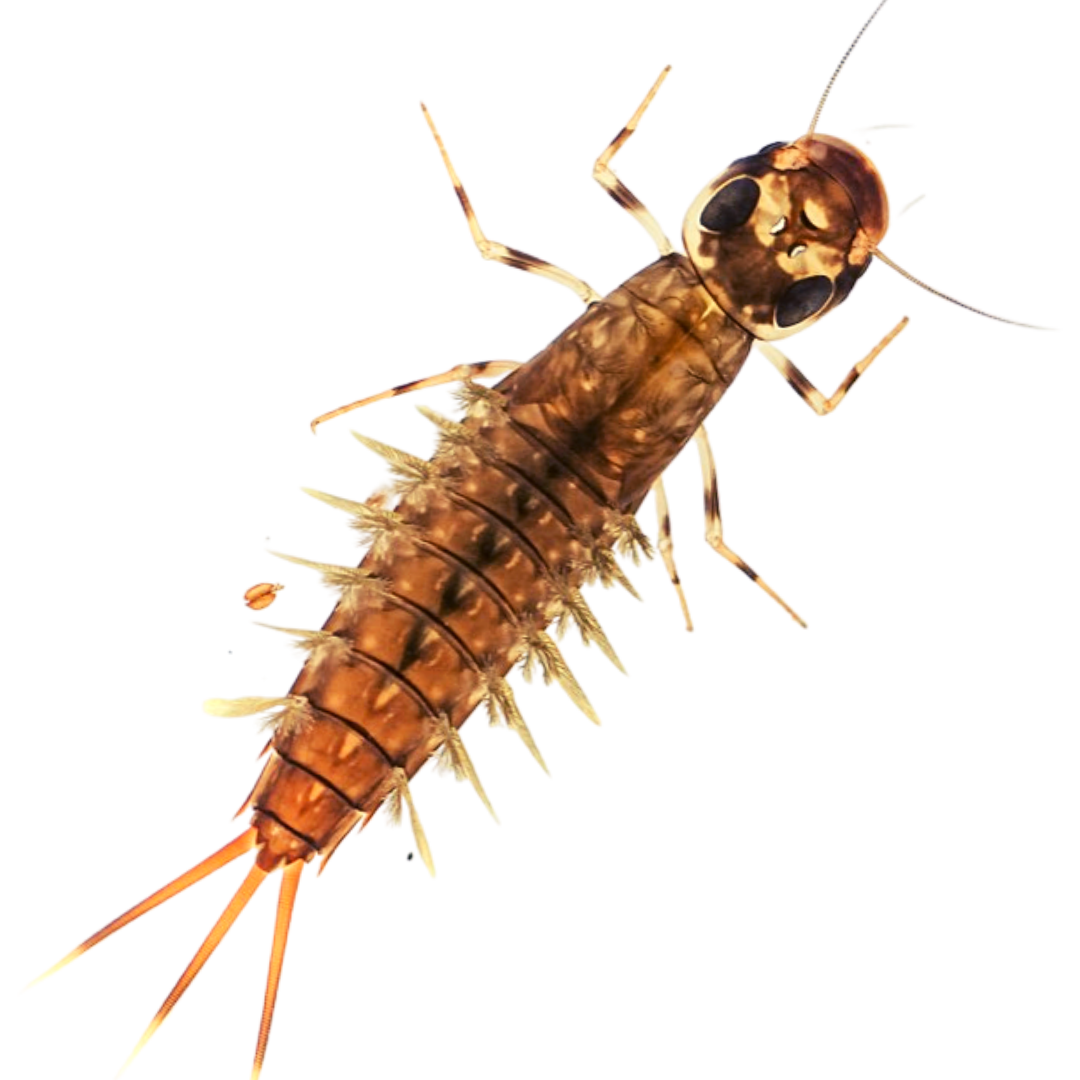
Bellingen Riverwatch
Macro Muster 1 Data
What waterbugs did Bellingen Riverwatch citizen scientists find in our rivers and what do they mean?
Written by Nakia Belmer and Adrian Dickson, Department of Planning and Environment, NSW Government and Amy Denshire, OzGREEN.
What we did…
Bellingen Riverwatch volunteers and partners worked together to sample macroinvertebrates (waterbugs) at six sites across the Bellinger and Kalang catchments, very unique river systems on the mid-north coast of NSW. The Waterbug Blitz method for sampling was used to guide the sampling, identification and analysis of results.
What we found
Our Macro Muster 1 data tells us that these rivers are in very good health.
Sites B2, B3.1, R1 and NN1 results were in the highest band. B4 and K1 were in the second highest band.
-
The information collected from a Waterbug Blitz sample provides us with good data that can be used to provide a preliminary assessment of waterway health. The primary indicators that we use to assess waterway health using waterbug (macroinvertebrate) data are biodiversity (Biodiversity Score) and pollution sensitivity (SIGNAL Score) of the community.
The Biodiversity score, which is calculated from the number of different individual waterbug taxa collected at this site.
The method for identification of waterbugs through the Waterbug Blitz sampling and application is known as the Agreed Level Taxonomy, or ALT method (https://www.thewaterbug.net/ALT.html).
ALT uses features that are visible to the naked eye to identify macroinvertebrates. ALT identifications result in data sets of mixed taxonomic levels, some at genus or species, and others at higher levels.
SIGNAL is an acronym for Stream Invertebrate Grade Number Average Level and is a scoring system for waterbugs that helps interpret the raw data. It is based on the sensitivity or tolerance of different waterbugs to pollutants and habitat degradation. Each waterbug has its own grade from 1 (very tolerant) to 10 (very sensitive). The average of these individual waterbug grades is calculated to give each waterbug site a SIGNAL score which can infer the water and habitat quality and help to assess the health of a waterway. The calculation of this score can be weighted by the abundance of each waterbug taxa within a sample or can be unweighted, using only the grade of the taxa.
This method applied through the Waterbug Blitz is currently being tested to see if the ALT levels retain enough taxonomic information to be used with a re-calculated SIGNAL score, which is termed SIGNALT, and is the indicator of waterbug community sensitivity communicated in this report.
It is anticipated that the ALT method will provide a quick, simple approach to waterbug identification and analysis that is a practical alternative for citizen scientists who want to assess stream health. Though it should be noted that the application of this method is still being tested. As such the results communicated in this report should be considered a preliminary only and assessed in the context of the monthly water quality results and the ongoing monitoring that Bellingen Riverwatch hope to continue into the future.
To assist understanding of the SIGNALT results the score categories in the image below are provided.
EPT% is the percentage of EPT taxa (Ephemeroptera, Plecoptera and Trichoptera or Mayflies, Stoneflies and Caddisflies) found within each sample.
See sites and results on Bellingen Riverwatch Macro Map also.
Macro Muster 1 Data Infographic
We have created an infographic to communicate the data from Muster 1. See our library of free resources here.
How does this Muster data compare with other Musters?
B2
Cool Creek
See site location on Bellingen Riverwatch Macro Map.
B2’s Muster 1 results indicate a very healthy waterbug community and was the highest of all sites sampled.
The Biodiversity score shows that the site has a lower diversity of waterbugs than some other sites.
-
The Biodiversity score, calculated from the number of different waterbug taxa collected at this site (7 taxa), suggests the site has a lower diversity compared to some other sites. This is relatively low and is most likely attributed to some inexperience in sampling and/or identification rather than a reflection of poor water or habitat quality.
-
The high SIGNALT score indicates a very healthy waterbug community and was the highest of all sites sampled.
-
The site recorded no Stonefly (Plecoptera) taxa although it did have a high abundance of Caddisfly (Trichoptera) and Mayfly (Ephemeroptera) taxa, equating to 95% of the collected waterbugs.
-
These results should be taken with caution due to the low diversity of waterbugs collected. Additional monitoring will provide experience for volunteers and lead to improved accuracy and reliability of results.
-
3 caddisfly taxa 64 individuals
No stonefly taxa
2 mayfly taxa 8 individuals
1 dragonfly taxa 2 individuals
1 Megaloptera taxa 2 individuals
-
Trichoptera (64)
Conoesucidae, Calocidae and Helicophidae (30)
Order: Caddisfly
Family: Helicophidae and Calocidae
Image by Shane Ruming, DPE.
B3.1
Tysons Bridge
See site location on Bellingen Riverwatch Macro Map.
B3.1’s Muster 1 results suggest good water and habitat quality persists at this site.
This site recorded no Stonefly taxa though the site did record a high abundance of Caddisfly and Mayfly taxa equating to 43% of the collected waterbugs. This result should be taken with caution though due to the low diversity of waterbugs collected.
-
The Biodiversity score, which is calculated from the number of different individual waterbug taxa collected at this site (9 taxa), suggests a lower diversity of waterbugs compared to some other sites. This is relatively low and is most likely attributed to some inexperience in sampling and/or identification rather than a reflection of poor water or habitat quality.
-
The SIGNALT score indicates a very healthy waterbug community dominated by sensitive taxa and suggests good water and habitat quality persists at this site.
-
The site recorded no Stonefly (Plecoptera) taxa although a high abundance of Caddisfly (Trichoptera) and Mayfly (Ephemeroptera) taxa were recorded, equating to 43% of the collected waterbugs.
-
These results should be interpreted with caution due to the low diversity of waterbugs collected. Additional monitoring will provide experience for volunteers and lead to improved accuracy and reliability of results.
-
3 caddisfly taxa 14 individuals
No stonefly taxa
2 mayfly taxa 60 individuals
2 beetle taxa 94 individuals
Freshwater Shrimp 4 individuals
4 unknown taxa
-
Coleoptera (94)
Water scavenger beetle (90)
Order: Aquatic Beetle
Family: Water scavenger beetle
Image by Shane Ruming, DPE
B4
Hobarts Bridge
See site location on Bellingen Riverwatch Macro Map.
B4’s Muster 1 results suggest good water and habitat quality occurs at this site.
This site recorded no Stonefly taxa though the site did record a high abundance of Caddisfly and Mayfly taxa equating to 60% of the collected waterbugs. This result should be taken with caution though due to the low diversity of waterbugs collected.
-
The Biodiversity score suggests this site has fewer waterbug taxa compared to some other sites. This can be observed in the number of different taxa collected in this site sample (10 taxa).
-
The SIGNALT score indicates this site has a relatively healthy waterbug community, with a high proportion of sensitive waterbugs present, suggesting good water and habitat quality occurs at this site.
-
The site recorded no Stonefly (Plecoptera) taxa although a high abundance in Caddisfly (Trichoptera) and Mayfly (Ephemeroptera) taxa, equating to 60% of the collected waterbugs, was recorded.
-
These results should be taken with caution due to the low diversity of waterbugs collected which could be attributed to some inexperience in the sampling and/or identification. However, these will improve with repeated surveys and a growing community of experienced volunteers to assist and guide sampling and assessment in future.
-
4 caddisfly taxa 56 individuals
No stonefly taxa
2 mayfly taxa 60 individuals
1 dragonfly taxa 8 individuals
Freshwater Shrimp 60 individuals
True Bugs 8 individuals
60 unknown individuals
-
Ephemeroptera (60)
Atyidae (60)
Order: Mayfly
Family: Leptophlebiidae
Image by Shane Ruming, DPE
K1
Kalang Fire Trail
See site location on Bellingen Riverwatch Macro Map.
K1’s Muster 1 results suggests a relatively healthy waterbug community, with a high proportion of waterbugs that are sensitive to changes in water quality.
The Biodiversity score shows that the site has a lower diversity of waterbugs than some other sites.
-
The Biodiversity score, as calculated from the number of different waterbug taxa collected at this site (19 taxa) suggests the site has a moderate diversity of waterbugs compared to some other sites.
-
Although the SIGNALT score was the lowest of all sites sampled it still indicates a relatively healthy waterbug community, with a high proportion of waterbugs that are sensitive to changes in water quality.
-
No Stoneflies (Plecoptera) were collected from the site sample, although a moderate abundance of Caddisflies (Trichoptera) and Mayflies (Ephemeroptera) were collected, equating to 30% of the sample, but was the lowest percentage of EPT taxa of the six samples.
-
This result should be taken with caution, as with results for some other sites, as EPT taxa percentages are possibly skewed to higher percentage due to lower diversity, which is possibly due to inexperienced sampling and/or identification rather than poor water or habitat quality. However, this will undoubtedly improve with ongoing monitoring as experience for volunteers will lead to improved accuracy and reliability of results.
-
4 caddisfly taxa 36 individuals
No stonefly taxa
3 mayfly taxa 50 individuals
1 dragonfly taxa 2 individuals
2 True Bug taxa 32 individuals
2 Fly taxa 6 individuals
3 or mare beetle taxa 104 individuals
Freshwater Shrimp 60 individuals
Aquatic mites 2 individuals
Aquatic worms 2 individuals
60 Unknown taxa
-
Coleoptera (104)
Water scavenger beetle (90)
Order: Aquatic Beetle
Family: Water Penny
Image by Shane Ruming, DPE.
NN1
Tuckers Nob
See site location on Bellingen Riverwatch Macro Map.
NN1’s Muster 1 results suggest good water habitat quality persist at this site.
This site recorded very high abundance of known sensitive taxa with 59% of the collected waterbugs belonging to the Caddisfly, Stonefly and Mayfly taxa.
-
The Biodiversity score indicates a highly diverse waterbug community which is demonstrated by the number of different taxa collected at the site (25 different waterbugs).
-
The SIGNALT score suggests a healthy waterbug community, with many sensitive waterbug taxa identified from the site sample.
-
The site also recorded very high abundance of known sensitive taxa with 59% of the waterbugs collected belonging to the Mayfly (Ephemeroptera), Stonefly (Plecoptera) and Caddisfly (Trichoptera) insect orders (collectively referred to as EPT taxa), which suggests good water habitat quality persist at this site.
-
9 caddisfly taxa 148 individuals
2 stonefly taxa 18 individuals
3 mayfly taxa 62 individuals
3 dragonfly taxa 14 individuals
2 fly taxa 38 individuals
2 or more beetle taxa 16 individuals
Freshwater shrimp 60 individuals
Aquatic mites 8 individuals
-
Trichoptera (148)
Ephemeroptera (62)
Order: Caddisfly
Family: Helicophidae and Calocidae
Image by Shane Ruming, DPE
Rosewood River
R1
See site location on Bellingen Riverwatch Macro Map.
R1’s Muster 1 results suggest good water and habitat quality is maintained at this site.
-
The high Biodiversity score, which is calculated from the number of different waterbug taxa collected in the site sample (17 taxa), suggests a high diversity of waterbugs.
-
The SIGNALT score indicates a waterbug community with a high proportion of sensitive taxa and when considered with the high Biodiversity score, suggests a healthy macroinvertebrate community.
-
The site recorded high abundance of known sensitive taxa with 33% of the collected waterbugs belonging to Mayfly (Ephemeroptera), Stonefly (Plecoptera) and Caddisfly (Trichoptera) insect orders.
-
3 caddisfly taxa 16 individuals
1 stonefly taxa 4 individuals
2 mayfly taxa 24 individuals
1 dragonfly taxa 4 individuals
2 fly taxa 6 individuals
3 beetle taxa 22 individuals
Freshwater shrimp 32 individuals
Aquatic mites 16 individuals
Aquatic worms 8 individuals
Aquatic leach 2 individuals
-
Atyidae (32)
Ephemeroptera (24)
This site recorded high abundance of known sensitive taxa with 33% of the collected waterbugs belonging to the Caddisfly, Stonefly and Mayfly taxa.
Order: Crustacean
Family: Freshwater shrimp
Image by Shane Ruming, DPE
It is everyone’s responsibility to maintain and improve our rivers.
We report on our data to help influence policy and decision making, and educate the community, now and into the future.
Note - Our raw data is shared with with the NSW Government Saving our Species recovery program for the BRST and is additionally available at both the Waterwatch portal and the DPIE SEED portal.
Raw Data
Our raw data can be found at the links below :
Sponsor Us
Power us to continue our important work.
-
Amy Denshire
Co-CEO
amy@ozgreen.org.au
02 5615 8108
Bellingen Riverwatch Data Portal Partners
This data portal was delivered through the NSW Environment Protection Authority’s Flood Recovery Program for Water Quality Monitoring, in partnership with the NSW Department of Climate Change, Energy, the Environment and Water and supported by the Riparian Stabilisation Package. The Riparian Stabilisation Package is co-funded by the Australian and NSW Governments under Disaster Recovery Funding Arrangements
Connect with Us
Amy Denshire
Bellingen Riverwatch Program Manager
amy@ozgreen.org.au













